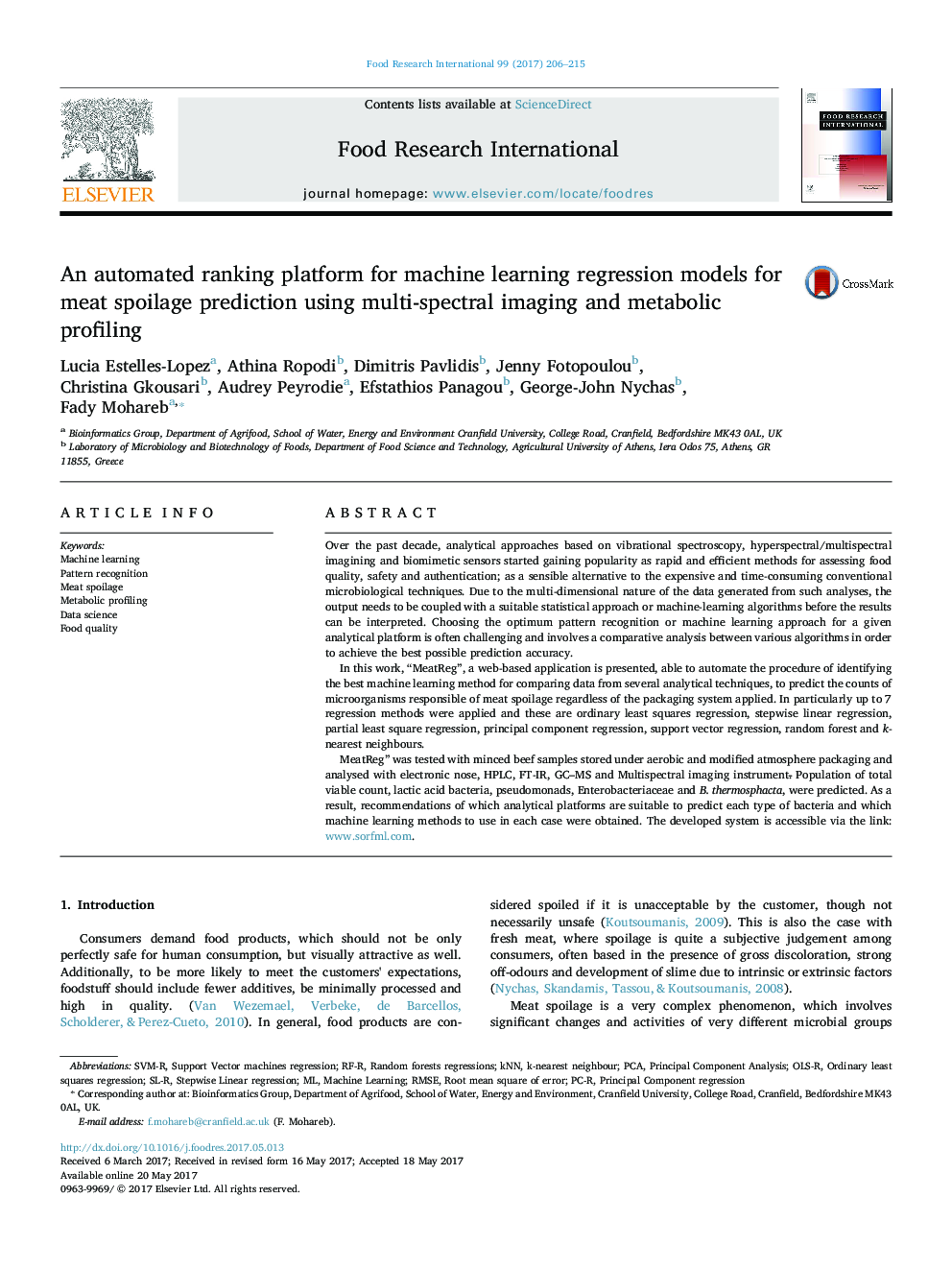| Article ID | Journal | Published Year | Pages | File Type |
|---|---|---|---|---|
| 5768093 | Food Research International | 2017 | 10 Pages |
⢓MeatReg” is a web application providing seven machine learning regression modelsâ¢The tool automates the procedure of identifying the best algorithm.â¢The suite was tested with minced beef stored under aerobic and MAP.â¢Regression models were ranked according to their suitability with each instrument.â¢The developed system is accessible via: www.sorfml.com.
Over the past decade, analytical approaches based on vibrational spectroscopy, hyperspectral/multispectral imagining and biomimetic sensors started gaining popularity as rapid and efficient methods for assessing food quality, safety and authentication; as a sensible alternative to the expensive and time-consuming conventional microbiological techniques. Due to the multi-dimensional nature of the data generated from such analyses, the output needs to be coupled with a suitable statistical approach or machine-learning algorithms before the results can be interpreted. Choosing the optimum pattern recognition or machine learning approach for a given analytical platform is often challenging and involves a comparative analysis between various algorithms in order to achieve the best possible prediction accuracy.In this work, “MeatReg”, a web-based application is presented, able to automate the procedure of identifying the best machine learning method for comparing data from several analytical techniques, to predict the counts of microorganisms responsible of meat spoilage regardless of the packaging system applied. In particularly up to 7 regression methods were applied and these are ordinary least squares regression, stepwise linear regression, partial least square regression, principal component regression, support vector regression, random forest and k-nearest neighbours.MeatReg” was tested with minced beef samples stored under aerobic and modified atmosphere packaging and analysed with electronic nose, HPLC, FT-IR, GC-MS and Multispectral imaging instrument. Population of total viable count, lactic acid bacteria, pseudomonads, Enterobacteriaceae and B. thermosphacta, were predicted. As a result, recommendations of which analytical platforms are suitable to predict each type of bacteria and which machine learning methods to use in each case were obtained. The developed system is accessible via the link: www.sorfml.com.
Graphical abstractDownload high-res image (167KB)Download full-size image
